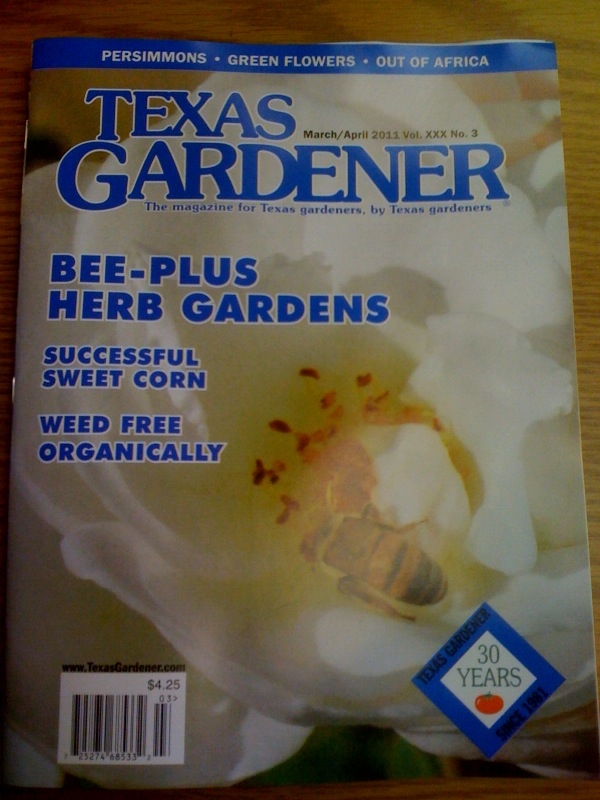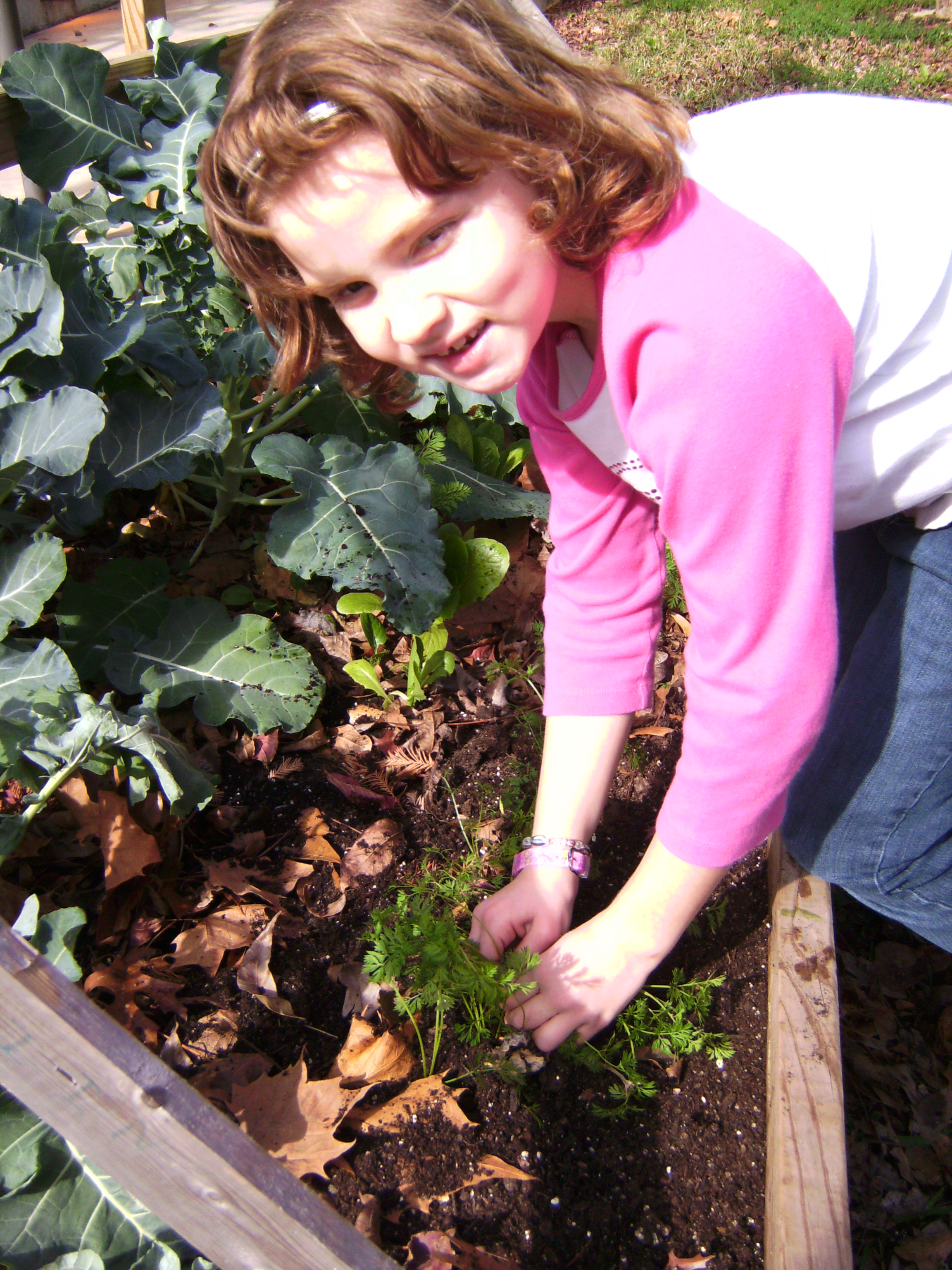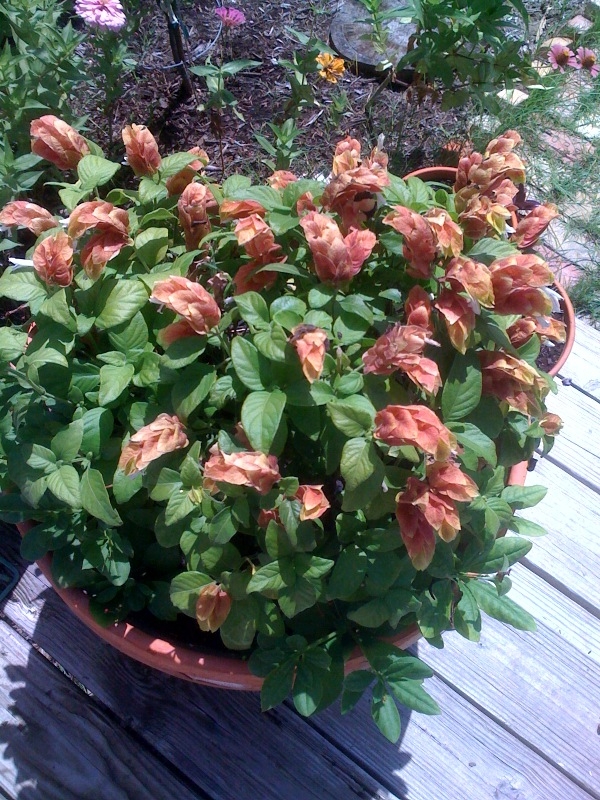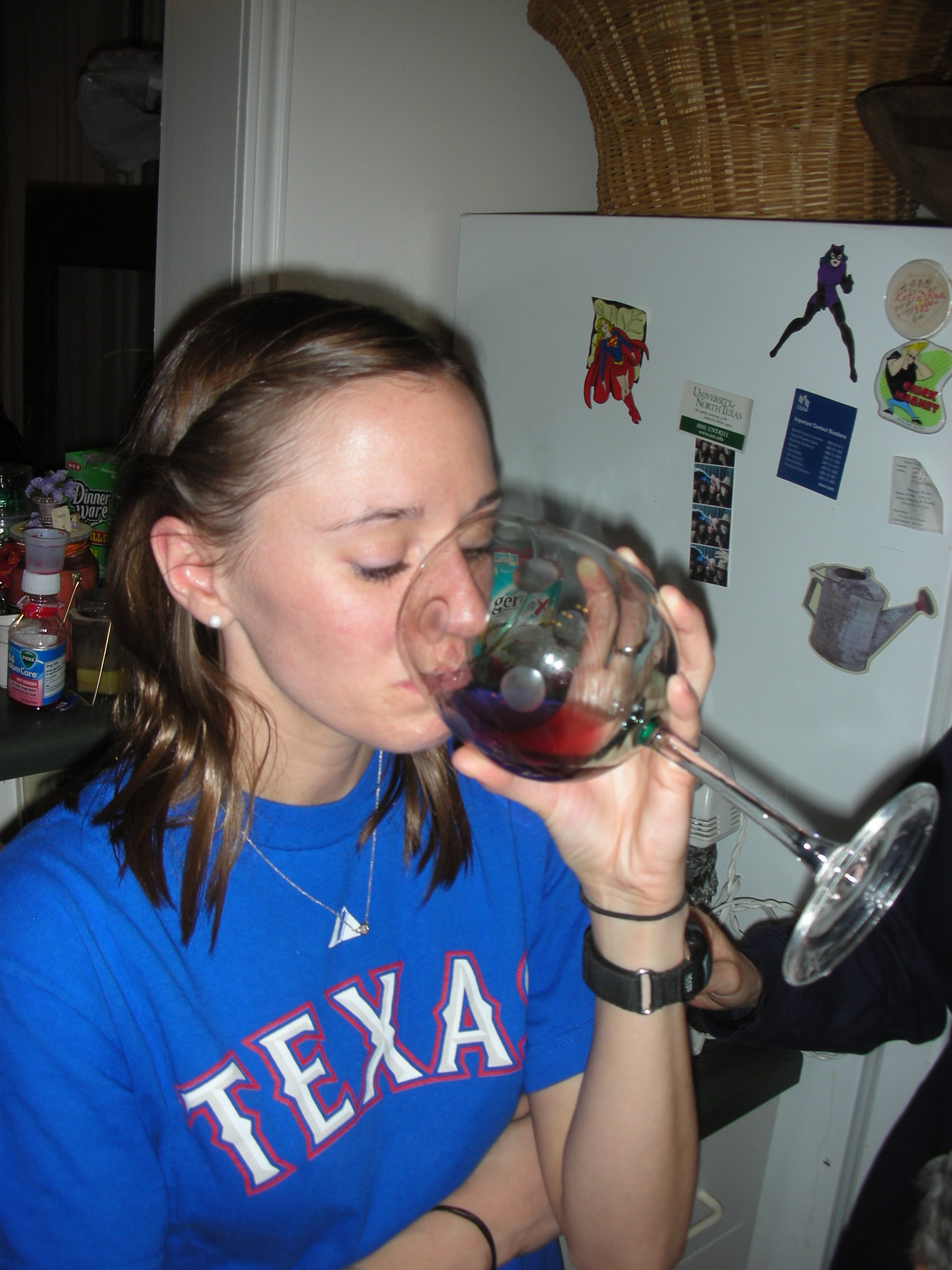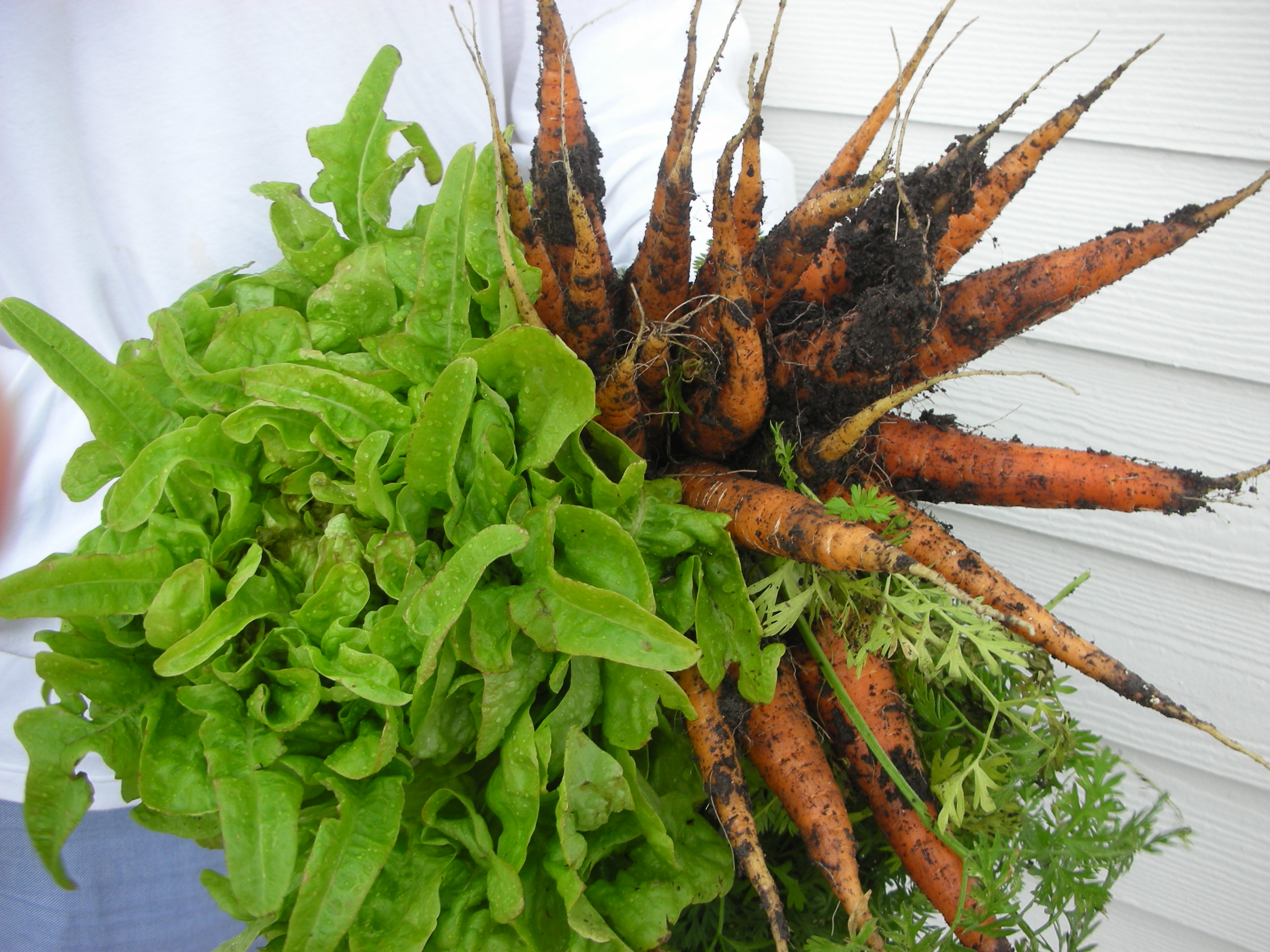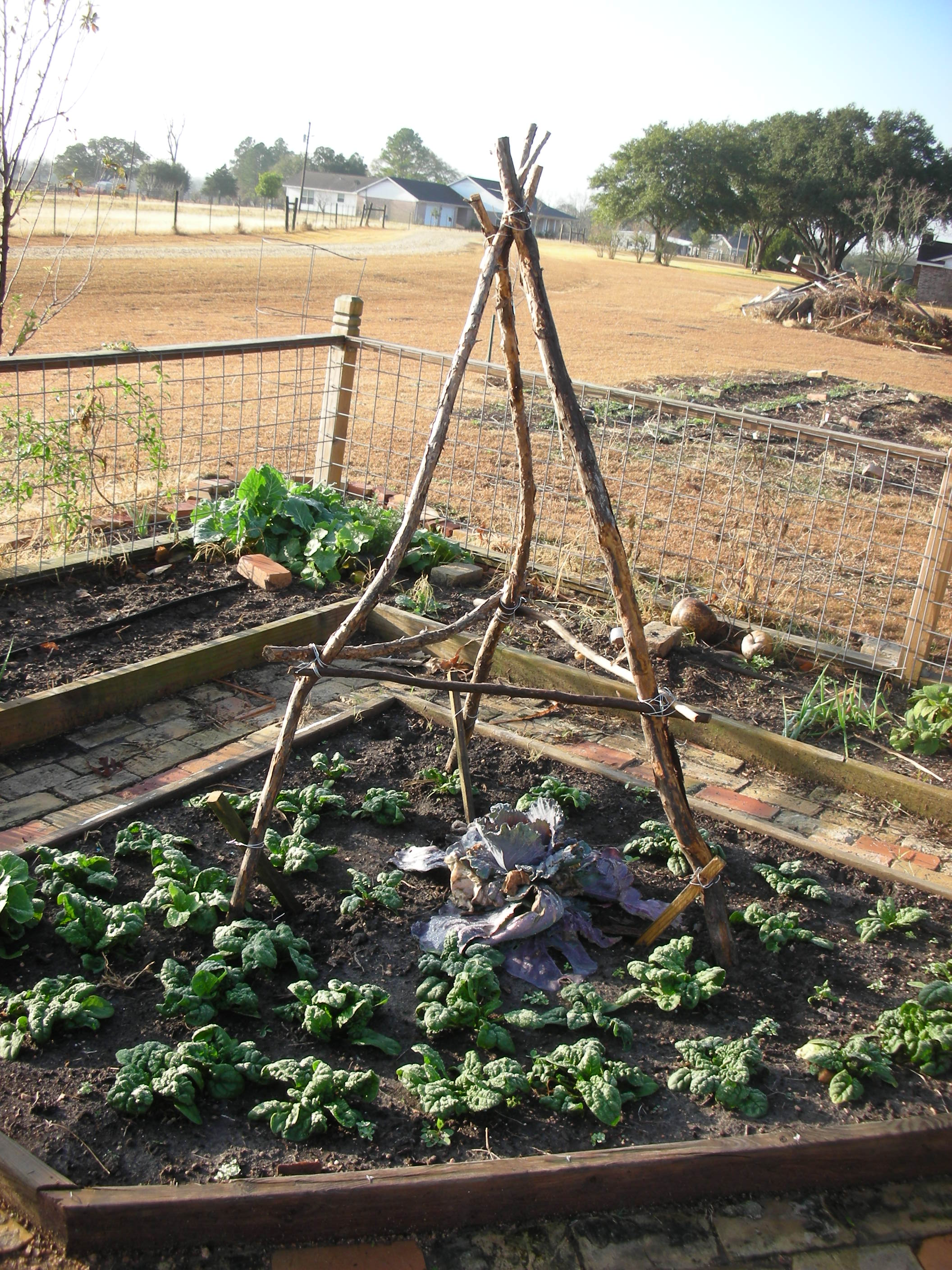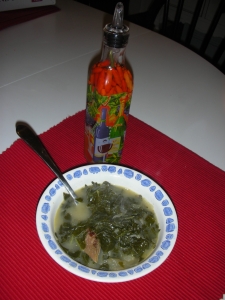 This past Wednesday, I got a signed copy of Chris Wiesinger’s new book “Heirloom Bulbs for Today” from my friend Dr. Bill Welch. Chris is the owner of the Southern Bulb Company and a true “Master of Horticulture”. Since graduating from A&M he has quickly established himself as the leading expert on Southern heirloom bulbs. His book is packed full of useful information about many of the heirloom bulbs that do really well in Texas and the Gulf South. This lovely book is as entertaining as it is useful. It is full of wonderful anecdotes about his bulb hunting expeditions. The photographs and illustrations are both beautiful and a great source for identifying the things you may dig up from time to time. The text also gives you all of the information you need to harvest, plant and care for these living heirlooms. If you are interested, you can find it on Amazon. Here is the link: http://www.amazon.com/Heirloom-Bulbs-Chris-Wiesinger/dp/193397995X
This past Wednesday, I got a signed copy of Chris Wiesinger’s new book “Heirloom Bulbs for Today” from my friend Dr. Bill Welch. Chris is the owner of the Southern Bulb Company and a true “Master of Horticulture”. Since graduating from A&M he has quickly established himself as the leading expert on Southern heirloom bulbs. His book is packed full of useful information about many of the heirloom bulbs that do really well in Texas and the Gulf South. This lovely book is as entertaining as it is useful. It is full of wonderful anecdotes about his bulb hunting expeditions. The photographs and illustrations are both beautiful and a great source for identifying the things you may dig up from time to time. The text also gives you all of the information you need to harvest, plant and care for these living heirlooms. If you are interested, you can find it on Amazon. Here is the link: http://www.amazon.com/Heirloom-Bulbs-Chris-Wiesinger/dp/193397995X

Grand Primos and Crinums at the Hueske Homestead
The timing of this book was very apropos. Two days after receiving it, the weather was a balmy 74 degrees and I had the day off. So, I decided to do a little bulb hunting of my own. My wife and I are friends with a wonderful and generous woman that is the owner of an abandoned homestead. This place was the home of two sisters for almost 100 years. Both were born in the house that still stands on the site. The sisters were avid gardeners who loved and nurtured this piece of property for almost 80 years. Their love of growing things is evidenced by the thousands of bulbs and corms that still bloom year round at the abandoned site. Thanks to the generosity of my friend, I am able to go to the home site periodically and harvest bulbs.

Crinums around an old bird bath
I really cannot convey in words how many bulbs there are at this house. Each time I visit I swear there are more bulbs there than when I last visited. The choice is never what to harvest, it is always how much to harvest. Today I made it easy on myself. I brought a wheelbarrow and told myself that when it was full I would quit.
Upon my arrival, I stepped inside the gate and started digging. The soil here is the most beautiful soil that I have ever found. 80 years of care can truly do wonders. My shovel easily slid into this beautiful loam. As I dug, I actually felt sorry for the bulbs that were going to have to leave this wonderful place for the hard black clay of my house. Each turn of the shovel revealed clumps and clumps of bulbs. After about an hour, I had harvested about 100 Grand Primo narcissus (Narcissus tazette ‘Grand Primo’) and an equal number of Oxblood Lilies (Rhodophiala bifida). I also harvested about 50 crinums of an unknown variety.

Time to go home
It is not really the optimal time to be gathering any of these bulbs. However, I have to harvest when my busy schedule allows. The good thing about most of these old fashioned varieties is their hardiness. Even though there are “better times” of the year to harvest them, you can realistically gather bulbs any time of the year. The worst thing that usually happens if you harvest out of season is they do not bloom the first season they are transplanted. That is a price I am willing to pay for the access to these living heirlooms.
Harvesting
Like I mentioned before, there is definitely a right time to harvest bulbs. For best results, you want to harvest (or divide) bulbs after their foliage has all died back. This happens at different time for different bulbs. Grand Primo will bloom in late January and early February in our part of the world. However, the foliage will stay bushy and green until June in some cases. Bulbs need this foliage to stay in place as long as possible. The foliage does the photosynthesis for the plant which the bulb then stores to produce next year’s blooms. Spider Lilies (Lycoris radiata) and Oxblood Lilies (Rhodophiala bifida) are fall blooming bulbs that produce foliage that stays green for up to six months. Because of this, it is a good idea to mark these bulbs so you will remember what you are digging when the time comes.
Dividing

Oxbloods and Grand Primos divided and ready to plant
When you dig up your bulbs, you want to be careful and not cut them. For that reason, dig at least six inches away from the dead clump. I stick the entire blade of my shovel into the soil on an angle toward the bulbs. I do this all the way around the clump. This creates a bowl shaped hole. Next, turn over the bowl shaped mound of dirt and start removing the soil. You will find the bulbs in clumps. Carefully separate the bulbs with your hands. Try to preserve as many root as you can and discard any bulbs that are soft or damaged.
At this point you have a choice. You can replant them immediately or you can dry and store them. I always replant immediately. However, if you want to save them then spread them out in the sun for a few days. After they are dry, store them in any permeable bag. You will want to keep them in a cool, dark, dry place until you are ready to replant or share them.
Planting
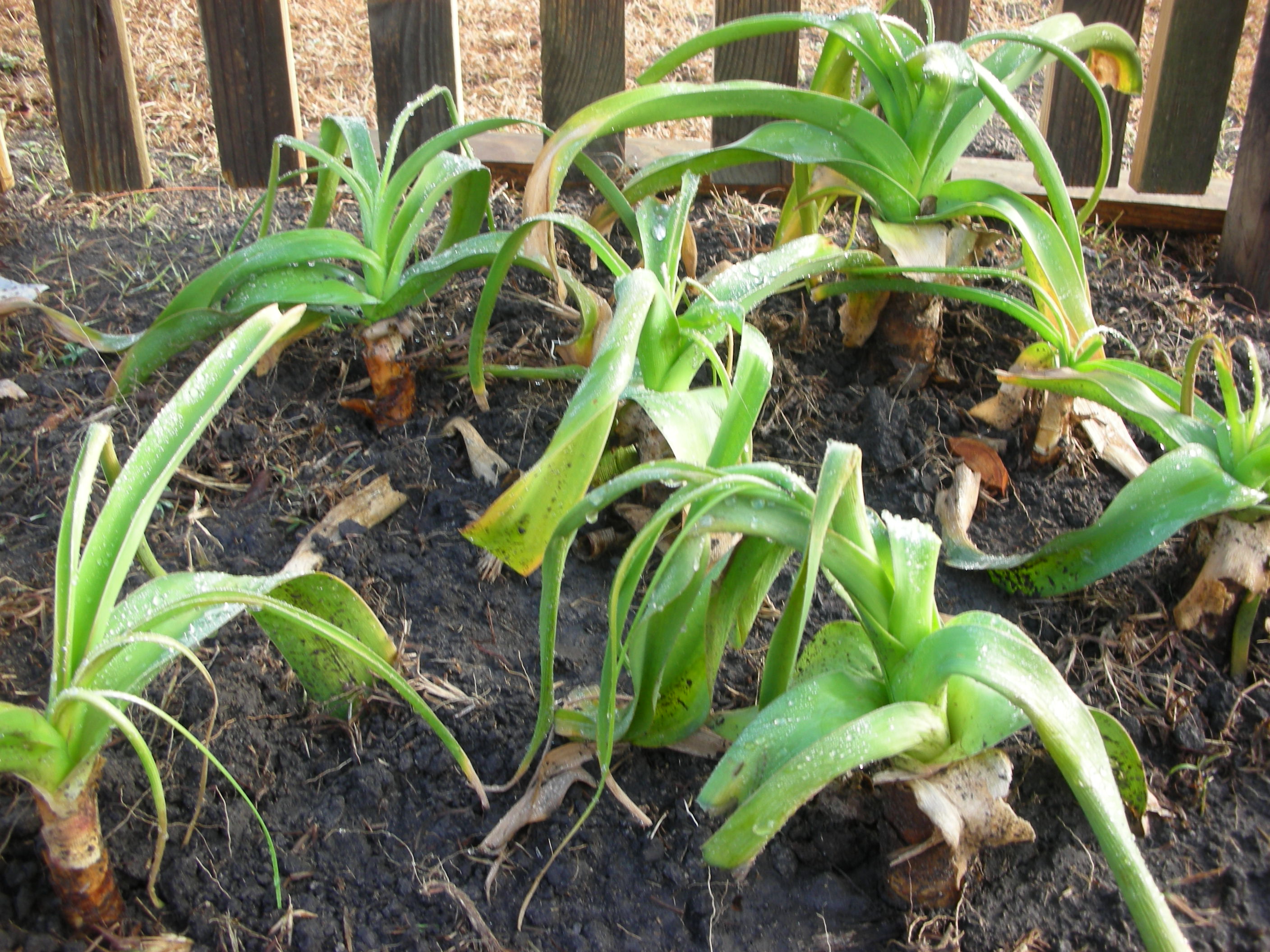
Crinums from the Hueske Homestead replanted in one of my beds
Heirloom bulbs are not too particular about how they are planted. Basically, just get them in the ground deep enough to cover them. One rule of thumb says that they should not be planted deeper than three bulb heights. Corms (like iris and gladiolas) should not be planted as deep. In fact, a lot of irises like to have the tops of their corms left exposed. Also, some bulbs like byzantine gladiolas can be difficult to determine which end is up. If that is the case, simply plant it sideways.
Nothing is more rewarding to me in the garden than growing things that have been shared with me. My grand parents were all gone before I was old enough to take things from their gardens to remind me of them in mine. However, thanks to the generosity of people I can still grow things from past gardeners who loved their plants as much as I love mine. I am so happy to be the care taker of these heirloom bulbs that have now been passed down from two gardeners of another time to me. I will think of these charming ladies each spring, summer and fall when the bulbs they enjoyed so long ago burst forth and brighten the time that I have left on this wonderful planet.
 We also met John and Wendy Rohan. They are the owners of Rohan Meadery (www.rohanmeadery.com). Until last night, I did not know what mead was. Turns out, it is wine made from honey. Many believe that mead was the first fermentated beverage enjoyed by mankind. The Rohan’s make and sell small batch artisanal mead from their meadery in La Grange, Texas. They use local honey that comes from Kenny and Wendy Reed of Bee Wilde Farm in Montgomery, Texas (http://beewilde.com/home1.html). They also use 100% organic fruit in their flavored meads. They brought three varieties for tasting and they were all excellent. We cannot wait to visit the meadery and load up. If you are in the La Grange area, stop by “The Hive” (their tasting room), take a tour and try their mead. I promise, you will thank me for telling you about them.
We also met John and Wendy Rohan. They are the owners of Rohan Meadery (www.rohanmeadery.com). Until last night, I did not know what mead was. Turns out, it is wine made from honey. Many believe that mead was the first fermentated beverage enjoyed by mankind. The Rohan’s make and sell small batch artisanal mead from their meadery in La Grange, Texas. They use local honey that comes from Kenny and Wendy Reed of Bee Wilde Farm in Montgomery, Texas (http://beewilde.com/home1.html). They also use 100% organic fruit in their flavored meads. They brought three varieties for tasting and they were all excellent. We cannot wait to visit the meadery and load up. If you are in the La Grange area, stop by “The Hive” (their tasting room), take a tour and try their mead. I promise, you will thank me for telling you about them.


